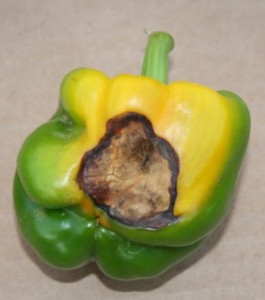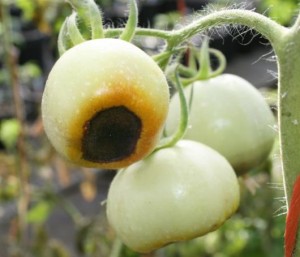At the Precision Agriculture and Irrigation Agent Training, Dr. Tim Coolong (University of Georgia Horticulture Specialist) discussed the importance of irrigation management for vegetable production and the various methods used for irrigation. With vegetables consisting of 85%- 92% water, it is very important to manage irrigation properly. There are many disorders that are associated with too much or too little water that can interfere with the selling of vegetables due to the simple fact that vegetables are often sold on appearance. The main irrigation systems Dr. Coolong discussed were various drip systems. He also explained how to find the correct amounts for how much and how long to irrigate. By knowing the correct amounts, farmers can decrease their risk for water related disorders by making the right adjustments to their irrigation system.
Below are some of the disorders Dr. Coolong mentioned.
- Blossom End Rot is a disorder that is technically a localized calcium disorder. However, calcium moves strictly in the xylem- via transpiration. Thus, blossom end rot is commonly seen during periods of droughts, flooding, and high humidity.
Other disorders:
Too little water causes:
- Blossom drop
- Significant in beans, peas and peppers (poblanos are notable)
- Sponginess
- in Squash
Too much water causes:
- Lenticel swelling (shown in the picture below)
- Poor sugars in melons
- Cracking in tomatoes



